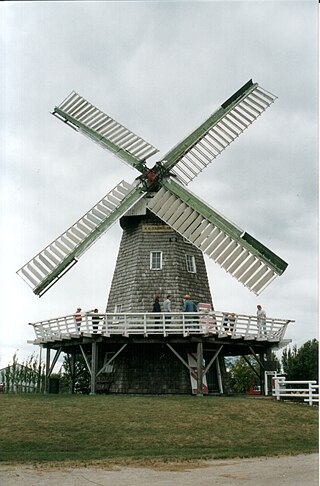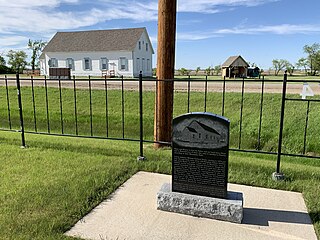
Mennonites are a group of Anabaptist Christian communities tracing their roots to the epoch of the Radical Reformation. The name Mennonites is derived from the cleric Menno Simons (1496–1561) of Friesland, part of the Holy Roman Empire, present day Netherlands. Menno Simons became a prominent leader within the wider Anabaptist movement and was a contemporary of Martin Luther (1483–1546) and Philip Melanchthon (1497–1560). Through his writings about the Reformation Simons articulated and formalized the teachings of earlier Swiss Anabaptist founders as well as early teachings of the Mennonites founded on the belief in both the mission and ministry of Jesus. Formal Mennonite beliefs were codified in the Dordrecht Confession of Faith (1632), which affirmed "the baptism of believers only, the washing of the feet as a symbol of servanthood, church discipline, the shunning of the excommunicated, the non-swearing of oaths, marriage within the same church", nonresistance, and in general, more emphasis on "true Christianity" involving "being Christian and obeying Christ" as they interpret it from the Holy Bible.
The German minority population in Russia, Ukraine, and the Soviet Union stemmed from several sources and arrived in several waves. Since the second half of the 19th century, as a consequence of the Russification policies and compulsory military service in the Russian Empire, large groups of Germans from Russia emigrated to the Americas, where they founded many towns. In 1914, an estimate put the remaining number of ethnic Germans living in the Russian Empire at 2,416,290. During World War II, ethnic Germans in the Soviet Union were persecuted and many were forcibly resettled to other regions such as Central Asia. In 1989, the Soviet Union declared to have an ethnic German population of roughly 2 million. By 2002, following the collapse of the Soviet Union in 1991, many ethnic Germans had emigrated and the population fell by half to roughly 1 million. 597,212 Germans self-identified as such in the 2002 Russian census, making Germans the fifth-largest ethnic group in the Russian Federation. There were 353,441 Germans in Kazakhstan and 21,472 in Kyrgyzstan (1999); while 33,300 Germans lived in Ukraine.
The Evangelical Mennonite Conference is a conference of Canadian evangelical Mennonite Christians headquartered in Steinbach, Manitoba, with 62 churches from British Columbia to southern Ontario. It includes people with a wide range of cultural and denominational backgrounds.

The Russian Mennonites are a group of Mennonites who are the descendants of Dutch and North German Anabaptists who settled in the Vistula delta in West Prussia for about 250 years and established colonies in the Russian Empire beginning in 1789. Since the late 19th century, many of them have emigrated to countries which are located throughout the Western Hemisphere. The rest of them were forcibly relocated, so very few of their descendants currently live in the locations of the original colonies. Russian Mennonites are traditionally multilingual but Plautdietsch is their first language as well as their lingua franca. In 2014, there were several hundred thousand Russian Mennonites: about 200,000 live in Germany, 74,122 live in Mexico, 150,000 in Bolivia, 40,000 live in Paraguay, 10,000 live in Belize, tens of thousands of them live in Canada and the US, and a few thousand live in Argentina, Uruguay, and Brazil.

Steinbach is the third-largest city in the province of Manitoba, Canada, and with a population of 17,806, the largest community in the Eastman region. The city, located about 58 km (36 mi) southeast of the provincial capital of Winnipeg, is bordered by the Rural Municipality of Hanover to the north, west, and south, and the Rural Municipality of La Broquerie to the east. Steinbach was first settled by Plautdietsch-speaking Mennonites from Ukraine in 1874, whose descendants continue to have a significant presence in the city today. Steinbach is found on the eastern edge of the Canadian Prairies, while Sandilands Provincial Forest is a short distance east of the city.

The Rural Municipality of Hanover is a rural municipality (RM) in southeastern Manitoba, Canada, located southeast of Winnipeg in Division No. 2.
Kleefeld is a local urban district located in the Rural Municipality of Hanover, Manitoba, Canada.

Chortitza Colony was a volost, a subdivision of the Yekaterinoslav uezd within the Yekaterinoslav Governorate. During the times of Catherine the Great, the area was annexed by the Russian Empire after liquidation of the Zaporozhian Sich. It was granted to Plautdietsch-speaking settlers for colonization northwest of Khortytsia Island. The territory of the former colony is now split between the city of Zaporizhzhia and its adjacent Zaporizhzhia Raion, within Zaporizhia it is part of Voznesenskyi and Khortytskyi districts.
Mitchell is a local urban district and population centre located in the Rural Municipality of Hanover, Manitoba, Canada. It is located three kilometers west of Steinbach, Manitoba along Provincial Highway 52. The community has a population of 3,136 as of 2016, making Mitchell the 19th largest population centre in Manitoba.
Molotschna Colony or Molochna Colony was a Russian Mennonite settlement in what is now Zaporizhzhia Oblast in Ukraine. Today, the central village, known as Molochansk, has a population less than 10,000. The settlement is named after the Molochna River which forms its western boundary. The land falls mostly within the Tokmatskyi and Chernihivskyi Raions. The nearest large city is Melitopol, southwest of Molochansk.

Mennonite Heritage Village is a museum in Steinbach, Manitoba, Canada telling the story of the Low German Mennonites in Canada. The museum contains both an open-air museum open seasonally, and indoor galleries open year-round. Opened in 1967 and expanded significantly since then, the Mennonite Heritage Village is a major tourist attraction in the area and officially designated as a Manitoba Signature Museum and Star Attraction. Approximately 47,000 visitors visit the museum each year.
Rosenort, Manitoba, is an unincorporated community recognized as a local urban district within the Rural Municipality of Morris about 17 kilometres from the town of Morris and about 47 kilometres south of Winnipeg.

The Chortitz Heritage Church is a former Mennonite church building located in the Canadian postal district of Randolph, Manitoba. The building was home to the Randolph Chortitzer Mennonite Church, one of the first Mennonite congregations in western Canada. Established in 1876 by Mennonite immigrants arriving from the Bergthal Colony in Russia, the original building was destroyed by fire and replaced by a new building in 1897, which still stands today.

According to a 2022 census, there were 74,122 Mennonites living in Mexico, the vast majority of which are established in the state of Chihuahua, followed by Campeche at around 15,000, with the rest living in smaller colonies in the states of Durango, Tamaulipas, Zacatecas, San Luis Potosí and Quintana Roo.

Blumenort is a local urban district in the Canadian province of Manitoba. It is located in the Rural Municipality of Hanover, 4.1 kilometres north of the city of Steinbach. It was founded in 1874 by Plautdietsch-speaking Mennonite farmers from the Russian Empire. Today, its economy is based on agriculture and the service industry.
Kleine Gemeinde is a Mennonite denomination founded in 1812 by Klaas Reimer in the Russian Empire. The current group primarily consists of Plautdietsch-speaking Russian Mennonites in Belize, Mexico and Bolivia, as well as a small presence in Canada and the United States. In 2015 it had some 5,400 baptized members. Most of its Canadian congregations diverged from the others over the latter half of the 20th century and are now called the Evangelical Mennonite Conference.

The Mennonites in Bolivia are among the most traditional and conservative of all Mennonite denominations in Latin America. They are mostly Russian Mennonites of Frisian, Flemish, and Prussian descent. As of 2013, there were about 70,000 Mennonites living in Bolivia; that population has grown to around 150,000 as of 2023.

Randolph, originally known as Chortitz, is a small community in the Rural Municipality of Hanover, Manitoba, Canada. The community has an estimated population of 70 and is located 1.6 kilometres north of Highway 52 on Provincial Road 206 about 11 kilometres west of Steinbach. Randolph is located within a half kilometre of the longitudinal centre of Canada.

The East Reserve was a block settlement in Eastern Manitoba initially set aside by the Government of Canada exclusively for settlement by Russian Mennonite settlers in 1873.

The West Reserve was a block settlement plot of land in Manitoba set aside by the Government of Canada exclusively for settlement by Russian Mennonite settlers in 1875.












